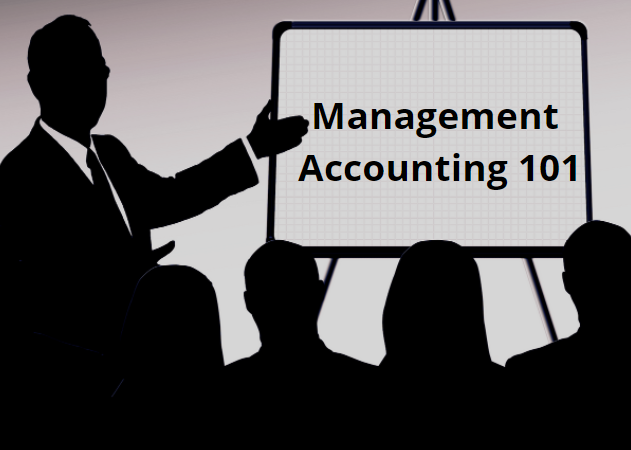The Accounts Receivable Aging Report is a critical report that every business should know and review regularly. The reason why it's so important is that it's the primary tool for monitoring how fast you collect outstanding invoices from your customers. This report is usually generated periodically, for example, every month or weekly basis.

The Accounts Receivable Aging Report shows the invoices due to be paid within 1, 2, 3, 4, 5, 6, 7, and over seven days. However, the accounts receivable aging report usually shows only invoices due to be paid in 30 days or less.
Here is an overview of the points included:
- What Is An Accounts Receivable Aging Report?
- How To understand the Accounts Receivable Aging Report?
- Different Types of Accounts Receivable Aging Reports
- What does 'Age of Inventory' mean in an Accounts Receivable Aging Report?
- What does 'Average Collection Period' in the Accounts Receivable Aging Report mean?
- Identify your bad debtors and create a plan to bring them back-to-health
- Analyze accounts receivable aging report and develop strategies to shorten the age of the debt
- Learn about the aging algorithm and review the accounts receivable aging report
What Is An Accounts Receivable Aging Report?
An accounts receivable aging report is a financial report that details the status of past-due invoices within an organization. An aging report tracks unpaid invoices based on how long they have been outstanding, providing information about which customers are delinquent in paying their bills.
A customer may delay payment due to a shortage of funds, or it might be that the customer is just slow at paying their bills. A well-organized account receivable aging report can help you identify trouble areas and take necessary action to collect outstanding payments before you experience late fees or penalties
An accounts receivable aging report is typically arranged by invoice number, invoice date, or invoice amount. This enables you to review outstanding invoices for each customer and determine the amount of time each invoice has been excellent.
Accounts receivable aging gives valuable insight into customer payment patterns. Your finance team can use this information to predict future customers' purchases. This will enable you to understand your customers and their payment patterns better.
How To understand the Accounts Receivable Aging Report?
The Aging Report provides a snapshot of accounts receivable, listing balances owed in detail by each customer. Use the report to determine which customers are late in paying their bills and what percentage of your total receivables are past due. If you have many over-due accounts, it's time to take positive action to improve cash flow.
Although several versions of the aging report, most include columns for customer name, invoice date, balance due, invoice amount due, and days past due. The report is usually sorted by "balance due," so accounts with the most extensive amounts outstanding appear at the top of the list. This is an easy way to see which customers owe you the most money.
The report contains information regarding the following aspects -
1) _Total_Amount_of_Dues
2) _Average_Days_of_Credit
3) _Today's_Balance
4) _Customer_Name
5) _Customer_Address
6) _Customer_Number
7) _Credit_Term
There are two main components to Accounts Receivable Aging Reports: the aging of accounts receivable and the turnover rate. The aging of accounts receivable tells you how long your clients have been owed money and is a good indicator of how likely they are to pay their bills.
Different Types of Accounts Receivable Aging Reports
There are two types of accounts receivable aging reports:
- Aging of Receivables from Customers - The first report shows how much time has passed since a company sold goods or services. This is useful if a company has a more extended credit period for sale, but it also helps you see if any customers will be paying late on your invoice. This aging report will show which customers have had an outstanding balance due more than 30 days after being invoiced
- Aging of Receivables from Suppliers - Usually referred to as AR (Accounts Receivable) Aging, this report tracks how much time has passed since you purchased supplies from vendors and your payment terms
If you pay your suppliers only after the goods arrive at your location, this will tell you how long it's taking to deliver and give you an idea of how long it will take for them to collect their money from you.
What does 'Age of Inventory' mean in an Accounts Receivable Aging Report?
Age of inventory is the average time between when a sale is made and when the receivable is collected. In accounting, this is called 'days sales outstanding or DSO.
The age of inventory is the number of days that your invoices are outstanding or past due. Accounts receivable aging reports contain data on invoices that are overdue for payment, which is typically 30-60 days but can be longer depending on the industry. Most companies use accounts receivable aging report to determine their credit limit or establish collection strategies.
In short, the number of days from the sale to the collection of payment. This data is included in accounts receivable reports and is also known as the aging of accounts receivable.
The 'Age of Inventory' in an AR Aging Report is the average number of days it takes to collect an invoice. For example, if you had $1,000 in AR invoices and they were all past due, your average collection time would be 40 days. If half of your invoices were 30 days old and half were 60 days old, your average collection time would be 45 days.
What does 'Average Collection Period' in the Accounts Receivable Aging Report mean?
Aging reports are used to determine the age of your accounts receivable. The longer the collection period, the more likely it is that you cannot collect outstanding invoices. This may be due to factors such as bad debt or weak customer relationships.
The accounts receivable aging report will show your accounts receivable by invoice amount and how long it has been since they were initially invoiced.
The Average Collection Period is the number of days it takes to collect an invoice from a customer. Some companies have a policy that they will not ship an order unless the customer has paid for the previous order. In accounting terms, this is called 'allowance planning'.
An Accounts Receivable Aging Report shows the current status of each customer invoice, from the date it was invoiced until the date it is paid.
Identify your bad debtors and create a plan to bring them back-to-health
Most businesses have customers that are slow to pay. Some take longer than others. Knowing where you stand in terms of bad debt can help you plan for the future and enable you to take action to get your money faster.
The general rule of thumb is that accounts receivable should be collected within 30 days. If you have any invoices in your A/R Aging Report that have been waiting longer than 30 days for payment, they're considered delinquent accounts. These are called bad debtors.
You want to shorten the average collection period by getting invoices out faster and following up with delinquent customers earlier than usual. You should also try to build in some wiggle room into your terms. When setting up new customers, consider giving them an extra 20% in terms of payment terms, so they still have an incentive to pay on time even if it takes 60 days to get paid rather than 30 days.
Analyze accounts receivable aging report and develop strategies to shorten the age of the debt
By analyzing your accounts receivable aging report, you can identify areas that need improvement. Your AR Aging Report reflects the dollars due, the percentages of ARs due by period, and the days past due. It is broken out by the customer or by product line.
You can customize this report to meet the needs of your business. As you analyze your aging reports, look for trends to help you improve collections. For instance, if there are many overdue accounts at one particular time, it could indicate that invoices are not being sent out promptly.
If there are many overdue accounts in one particular period, it could indicate that invoices are not being sent out promptly.
It's essential to keep track of when invoices are due to avoid missing payment deadlines. You might consider implementing an auto-payment system for your customers so that they can take advantage of discounts offered by your business. You can also call or email customers about their overdue accounts and remind them of the importance of paying on time.
The aged receivables report provides information about how long your customers have been invoiced and unpaid and highlights those companies who are overdue for their payments. The A/R aging report can help you determine if there are any problems with your credit policies, such as too-long credit periods or a problem with cash collection.
Learn about the aging algorithm and review the accounts receivable aging report
Early detection and prevention is the key to effective management of accounts receivable and its aging report.
Aging reports are generated using several different algorithms. Still, the most popular way to develop one is based on the average number of days it takes a customer to pay a bill after receiving an invoice.
A company will use this average to indicate how long they should allow between sending out invoices and expecting payment from customers. Each customer's days overdue will then be calculated based on this number.
In most cases, customers pay on time or early. In some situations, however, companies will have customers who do not pay on time or only partially pay their invoices even after several reminders.
In these cases, a company needs to go after them and collect what is still owed before they file for bankruptcy or close down their business permanently. An accounts receivable aging report can help you determine which customers may be going through financial difficulties and thus might need additional reminders to prompt them into paying their invoices on time.
The report is made based on the aging of your invoices. The report divides invoices into groups:
Current invoices: invoices that have not been paid and are less than 30 days old. These invoices will appear in your A/R Aging report under the "Current" heading.
Aged, but not due for more than 90 days: invoices that have been unpaid for more than 30 days but not yet past due. These invoices will appear in your Aging Report under the "Aged" heading.
Past due: invoices that have been unpaid for more than 90 days and are therefore considered overdue. These invoices will appear in your A/R Aging Report under the "Past Due" heading.
How can Deskera Help You?
Deskera Books is an online accounting, invoicing, and inventory management software that is designed to make your life easy. A one-stop solution, it caters to all your business needs from creating invoices, tracking expenses to viewing all your financial documents whenever you need them.
The platform works exceptionally well for small businesses that need to figure out a lot of things when they are setting out. This delightful software allows them to keep up with the client’s expectations by assisting them in overseeing a timely delivery.
With the well-thought and well-designed templates, you can now anticipate your work to become simpler. These templates can be used for transactions like invoices, quotations, orders, bills, and payment receipts.
If yours is a drop shipping business, you can easily track your orders and create new dropship orders for your suppliers based on the customer orders.
Deskera People is another platform that enables you to expedite and simplify the processes. Through its automated processes like hiring, payroll, leave, attendance, expenses, and more, you can now unburden yourself and focus on the major business activities. It also assists with driving growth for your business by integrated Accounting, CRM & HR Software.
Wrapping Up
Accounts Receivable Aging Report shows you which invoices are overdue and which invoices are about to be outstanding. The reason why it's crucial for your business is that your cash flow will be affected if any of your customers are late in paying their bills.
If you have overdue invoices, you might have to ask your customers for an extension, resulting in additional costs for your business because now you have to pay interest on late payments.
Therefore it's imperative to keep an eye on this report so that you can take action.
The aging report analyses the number of times debtors (your customers) take to pay their invoices. The accounts receivable aging report is a standard accounting tool that can help you measure how well your business manages its cash flow.
Key Takeaways
Companies' aging of accounts receivable is an algorithm to identify late-paying clients and take necessary action against them. This system helps companies reduce direct costs and increase cash flow because it identifies clients who are habitually late in paying bills.
Accounts receivable aging reports are essential for both invoice factoring companies and businesses using invoice factoring services. Invoice factoring companies produce accounts receivable aging reports daily for their clients to identify slow-paying clients and make necessary calls to ensure timely payments from them.
This report will display the age of receivables in days, starting with the most recent invoice and working backward toward older invoices. To create an aging report:
1) Open the Customer Centre window by clicking on Customers in the navigation bar at the top of your screen;
2) Click on the Reports tab
3) Select Accounts Receivable from the drop-down menu
4) Click on Aging Report
5) Click on View Report, and lastly,
6) Click on Print or Save As PDF
At Deskera, we define the purpose of this type of report, which is to indicate if your receivables are aging too quickly or too slowly - meaning: you need to collect money quicker or slower than what is specified by industry standards.
Related Articles











